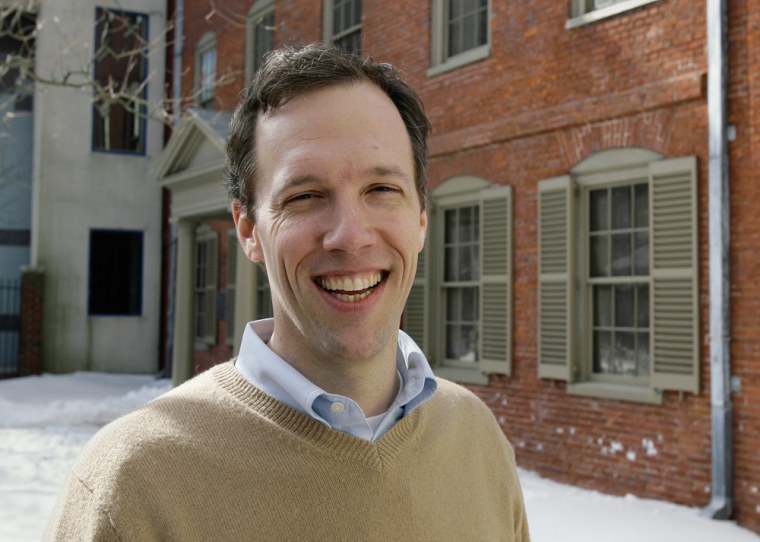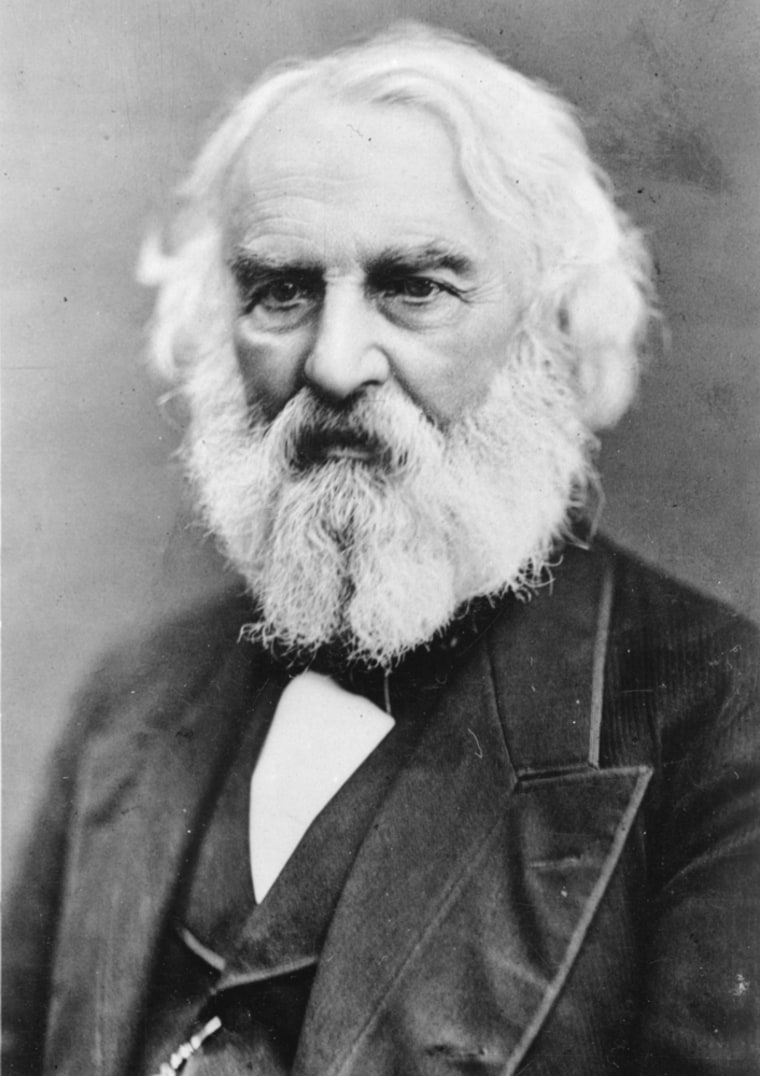When Henry Wadsworth Longfellow first put pen to paper, poetry was one of the most widespread forms of entertainment. Everyone from the common man to heads of state read Longfellow’s poems, just as today we all find ourselves watching MTV, CNN, “The Sopranos,” “American Idol” and the Super Bowl. Longfellow defined the image of America both at home and abroad.
Longfellow’s popularity accorded him an influence far beyond that of other public figures. His poems gave human voice to Indians and slaves, promoted strong women, and held forth on the horrors of the Civil War, witchcraft in Salem, the suppression of the Quakers and racial prejudice. His writings were discussed by Americans across the growing country, shaping both their self-image and their ethic of tolerance. Longfellow’s unique ability to combine history with rhyme sang to the nation’s soul.
Even today, Longfellow’s phrases are so much a part of our vernacular that they roll off our tongues with surprising ease: The forest primeval. ... Ships passing in the night. ... Footprints on the sands of time. ... Life is real! Life is earnest!
Longfellow was a sophisticated man whose travels took him through France, Italy, Spain and Germany. His travels through the Americas were more limited, but his influence on travel has been monumental in the regions of America where he set his story poems. In Boston, for example, a tourism industry has been brought to life almost entirely through the evocative words of one poem that begins:
Listen my children, and you shall hear
Of the midnight ride of Paul Revere ...
“Paul Revere’s Ride” made the silversmith a national hero some 50 years after his death. And Old North Church, part of Boston’s famous Freedom Trail, would hardly be a tourist attraction without Longfellow’s epic line, “One if by land, two if by sea.” If the name of the other alarm-rider that night, Robert Dawes, had rhymed a bit better, he might be as well known as Paul Revere.
The collection of poetry that included Paul Revere’s story, “Tales of a Wayside Inn,” created another center of tourism just outside Boston, in the town of Sudbury, Mass. Though Longfellow visited the 1716 inn only once, his writings immortalized the spot where colonial commanders met during the Revolutionary War. The 10-room inn and its chapel were designated a National Historic Site and today are favorite locations for weddings and Thanksgiving dinner.
Longfellow also brought to life the Pilgrim settlement in Plymouth, Mass., through his story of love and misunderstanding, “The Courtship of Miles Standish.” The poem, long a staple of schoolroom elocution, romanticized the early settlers and fixed them firmly in the American psyche. The poem also focused on one of the growing political questions of Longfellow’s day, the changing role of women, by celebrating the independent-thinking heroine Priscilla Mullins, who stood equal with men and spoke “so frankly and freely” rather than “wait like a ghost that is speechless.”

Longfellow lived in Cambridge, Mass., and taught at Harvard University for most of his life. He lived in a palatial home that was given to him by the father of his second wife, Frances Appleton. George Washington stayed in this house during the British siege of Boston. The home is now a National Historic Site filled with the original furnishings of the Longfellow family. The poet’s library, which contains more than 10,000 books, is open for visits.
Though Longfellow never traveled to Minnesota or Louisiana, his epic poems “The Song of Hiawatha” and “Evangeline” have influenced both those regions, where the stories unfolded, and each still celebrates the poet. Scores of towns, roads, scenic highways, bridges, housing developments and hundreds of schools are named after the characters and locales of these poems, as well as for Longfellow himself.
Modern critics find much to fault in “The Song of Hiawatha,” the Native American saga that was the most widely read poem of the 1800s. But for its time, the poem was remarkably sensitive, portraying the Indians with dignity as humans rather than simply as savages. The lament for the warring tribes still has power in today’s tumultuous world.
I have given you lands to hunt in,
I have given you streams to fish in,
I have given you bears and bison,
I have given you roe and reindeer,
I have given you brant and beaver,
Filled the marshes full of wild-fowl,
Filled the rivers full of fishes;
Why then are you not contented?
Why then will you hunt each other?
“Hiawatha” has spawned a tourism industry in Minnesota that includes a 193-acre national park and an annual festival. A sculpture of Hiawatha carrying his bride, Minnehaha, stands in the park that bears her name, and the Minnesota Park Service runs its information center in a replica of Longfellow’s Cambridge home. Near Minneapolis, the Great Rounds Scenic Byway winds through beautiful Hiawatha country, and in nearby Pipestone, Minn., locals stage a Hiawatha pageant in late July and early August, as they have for 59 years. Over the years the cast has grown to 200 people, and the assembled players now perform the epic poem for around 20,000 rapt visitors each year.
“Evangeline,” another of Longfellow’s epic poems, tells the story of the forcible uprooting of the Acadian population from Nova Scotia by the British during the French and Indian War (1764-1788). The tale is told as the story of two lovers who are separated by soldiers just before their wedding; they search for each other all along the eastern coast of the British colonies and as far south as Louisiana.
St. Martinville, La., welcomes thousands of visitors each year who come to see the “Evangeline Oak,” a spreading oak beneath which, reputedly, the lovers who inspired Longfellow’s story found each other, alongside the placid bayou that the town still preserves in their honor.
All was ended now, the hope, and the fear, and the sorrow,
All the aching of the heart, the restless, unsatisfied longing,
All the dull, deep Pain, and constant anguish of patience.
St. Martinville, which is considered to be a center of Cajun culture, erected a statue dedicated to Evangeline and created a monument to the expulsion of the Acadians, the French-related settlers who brought Cajun culture to the bayous. In Grand-Pré, Nova Scotia, there is another statue of Evangeline, marking the place where the Acadian expulsion began.
Only along the shore of the mournful and misty Atlantic
Linger a few Acadian peasants, whose fathers from exile
Wandered back to their native land to die in its bosom, ...
Maidens still wear their Norman caps and their kirtles of homespun,
And by the evening fire repeat Evangeline’s story.
Longfellow’s flowing rhymes and poetic discipline irritated later critics but delighted readers of his day, who made him the most popular American poet of the 19th century. And no wonder. Beneath the melodic language and behind the dramatic descriptions lies a profound exploration of human existence, strength against adversity, changing mores, and the ultimate triumph of right. These themes and sensuous descriptions of place are woven through the poetry, making any trip to a Longfellow tourist site a journey of body and soul.
If you want to visit or learn more, check out these Web sites or call the site superintendent.
Longfellow National Historic Site,
Cambridge, Mass., 617-876-4491
Longfellow’s Wayside Inn,
Sudbury, Mass., 978-443-1776
Plimoth Plantation,
Plymouth, Mass., 508-746-1622
The Old North Church,
Boston, Mass., 617-523-6676
The Paul Revere House,
Boston, Mass., 617-523-2338
Grand Rounds Scenic Byway,
612-230-6400
Minnehaha Park,
Minneapolis, Minn., 612-230-6400
The Song of Hiawatha Pageant,
Pipestone, Minn., 800-430-4126
Longfellow-Evangeline State Historic Site,
St. Martinville, La.
